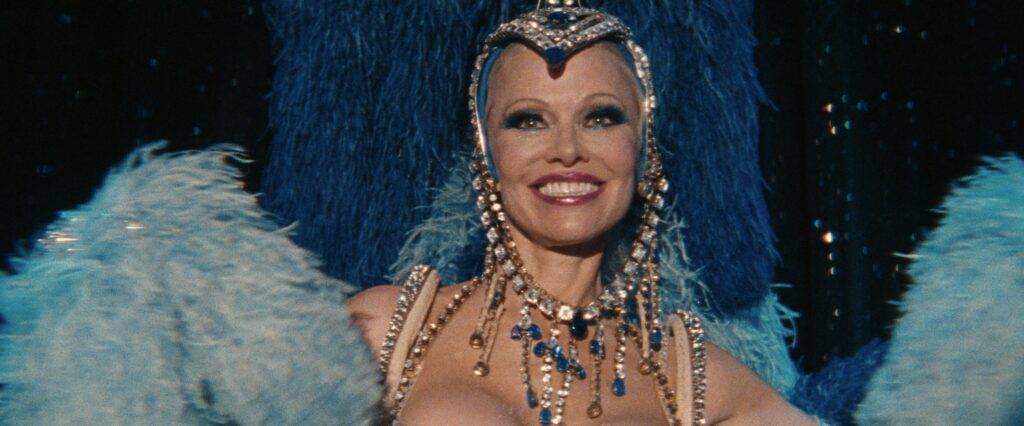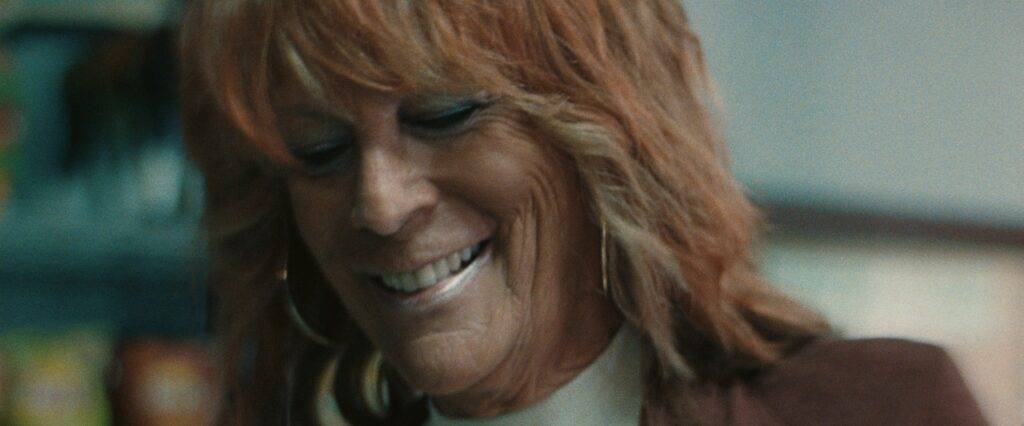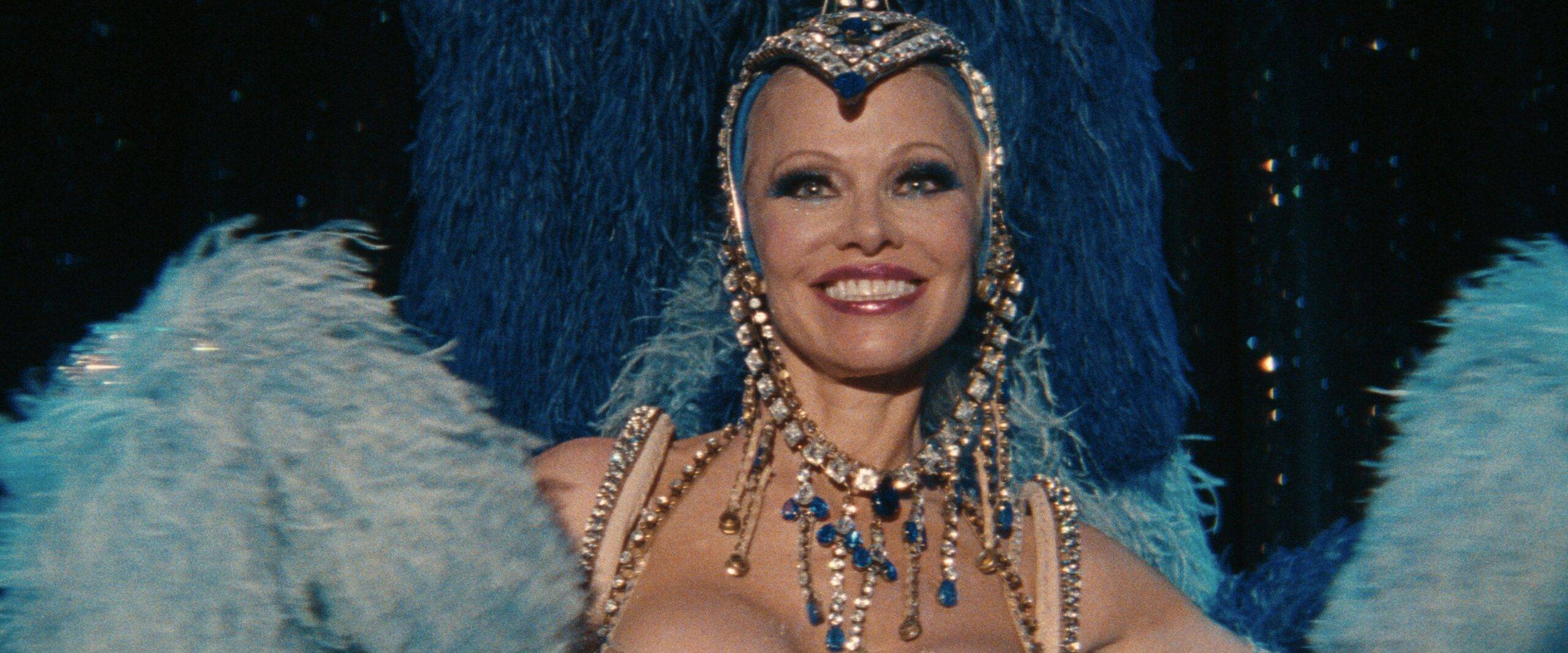THE LAST SHOWGIRL Film Review
A Career Performance from Pamela Anderson Isn’t Enough
THE LAST SHOWGIRL Film Review | Adam Manery
The Last Showgirl is the latest film from Gia Coppola, granddaughter of Francis Ford Coppola, a name synonymous with the world of film. Gia Coppola is certainly adept at softly and subtly exploring the complex nature of being a woman, but she is still carving out her own path in the industry, and there is yet to be a clear consensus about where exactly she stands amongst her peers.
Pamela Anderson Shines as Shelly

At the heart of The Last Showgirl is Pamela Anderson, who portrays Shelly, a 57-year-old Las Vegas showgirl grappling with the closure of her long-running show, Le Razzle Dazzle. Anderson has been public about “getting ready [her] whole life for this film” – a role that does feel tailor-made for her. The Last Showgirl allows her to showcase her range and depth, drawing on her lived experiences to deliver a grounded and emotionally resonant performance.
In many ways, Anderson’s journey mirrors that of her character. Her career was initially defined by her physicality, her sexuality, and the male gaze, which shaped both her public persona and the roles available to her. Over time, she has worked to redefine her narrative, moving from being seen as a cultural caricature to a serious artist. Anderson’s performance here, coupled with her turn in Chicago on Broadway in 2022, marks a significant step in reclaiming her career on her own terms.
It’s also wonderful to see that Anderson has already been acknowledged with nominations from the Golden Globes and the Screen Actors Guild Awards for Best Actress. However, the buzz surrounding her performance has quieted somewhat, as attention shifts toward Jamie Lee Curtis’ supporting role.
Jamie Lee Curtis Steals the Spotlight

Sharing the screen with a powerhouse like Jamie Lee Curtis is no small feat. Curtis’ character serves as a foil to Shelly, presenting the “other side of the coin.” While Anderson’s character clings to her identity as an artist and struggles to accept her reality, Curtis’ character has embraced her role (to an extent) and learned to laugh at the adversities she’s faced. To simplify, Anderson’s Shelly represents holding onto the dream of artistry, while Curtis’ character reflects someone who has accepted the realities of her circumstances with humour.
Curtis brings her signature gravitas and charisma to the role, often stealing scenes with her comedic portrayal. With a BAFTA nomination already in hand, Curtis might very well be in the running for another Oscar. Her performance, alongside Anderson’s, is one of the elements of the film that truly stands out.
Aesthetic Choices and Cinematography
Cinematographer Autumn Durald Arkapaw creates a visually striking film, with faded pinks dominating the palette to symbolize the fading allure of the Vegas spotlight. The decision to shoot on film rather than digitally enhances this softness, imbuing the movie with a dreamy, nostalgic quality.
However, this aesthetic choice is not without its drawbacks. At times, the characters seem to blend into the background, with details lost in the haze. While this may be an intentional artistic decision, it sacrifices some of the emotional resonance of the characters’ struggles. Adding to this, a significant portion of the film is slightly out of focus. This could be due to the film’s low budget and quick shooting schedule, or perhaps simple mistakes made by those pulling focus. Regardless, it’s a flaw that can be distracting for viewers who notice such technical issues.
Themes Explored, but Not Fully Realized

The Last Showgirl tackles important themes, including the pressures faced by women in entertainment, feelings of invisibility, and the pervasive influence of the male gaze. Unfortunately, the script fails to develop these ideas in a meaningful way. The relationships explored throughout the film also lack resolution, leaving the audience with little to hold onto.
To add to this, these particular themes have been more effectively examined in other films from this year, such as The Substance. While The Last Showgirl touches on the struggles and pressures of being a woman in the entertainment industry, it doesn’t achieve the same level of impact, falling short in emotional depth and creative commitment.
That being said, one of the most thought-provoking aspects of the film is its exploration of the pursuit of art. It raises questions about the narratives we create around the life of an artist and whether these romanticized notions hold up to the harsh realities of artistic struggle. The film suggests that most artists face failure, that many never achieve recognition, and that some simply aren’t good enough. These blunt reflections, while difficult to confront, may have a lasting impact, even if the film itself doesn’t fully capitalize on its potential.
Final Thoughts
Ultimately, despite strong performances from Pamela Anderson and Jamie Lee Curtis, The Last Showgirl struggles to find its footing. Its themes are important but underdeveloped, and its visual style, while striking, sometimes undermines the characters’ emotional depth. The film offers glimpses of brilliance but fails to deliver a cohesive and impactful story. For fans of Anderson and Curtis, it may still be worth a watch, but The Last Showgirl falls short of being a must-see. The Last Showgirl Film Review | Adam Manery
Check out the Top 24 Films of 2024
OR
10 Films to Watch in 2025




